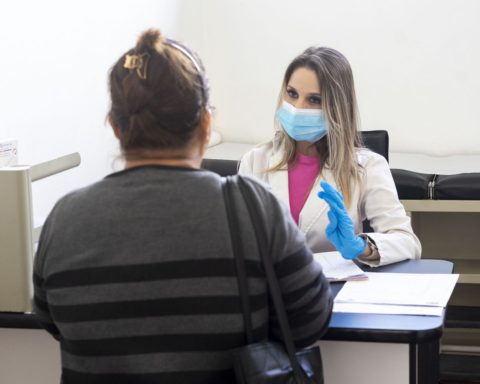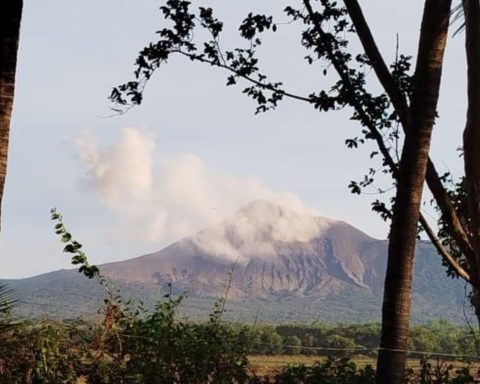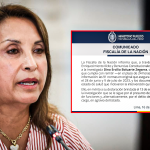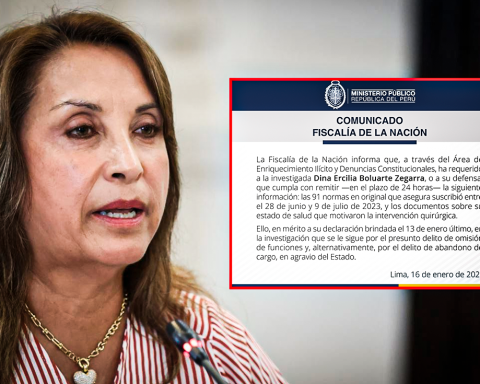Between January and June 2022, there were 1,373 deaths attributable to covid-19 in Nicaragua, according to the analysis of the figures published in the latest update of the Health Map made by the Ministry of Health (Minsa), although officially the institution – under control of the Ortega regime – only admits 26 deaths until June 2022, and 28 until July 12 of this year, when the last person deceased by the pandemic in the country was reported.
The analysis reveals that the Minsa thus hides more than 98% of the deaths attributable to covid-19 in this first half of the year, in a sustained official attempt to hide the true impact of the pandemic, despite the millionaire cooperation that the agencies multilateral organizations have granted it through loans and donations.
The calculation of deaths attributable to the pandemic, carried out by CONFIDENTIALreveals that excess mortality in the country rises to 16,188 in 27 months of the pandemic, from March 2020 to June 2022. A previous study, published last March, analyzed excess mortality between 2020 and 2021 and estimated that 14,815 people died from covid-19 in those two years.
The estimate is based on the excess mortality methodology that calculates the number of deaths from all causes (hypertension, diabetes, heart attacks, among others), using the three years prior to the pandemic as a reference and associates the surplus with covid-19. 19. This methodology is widely used and validated by international organizations, such as the World Health Organization (WHO), universities and public health doctors. In addition, it has served to measure the impact of SAR-CoV-2 in different countries around the world.
In its sustained attempt to hide the true impact of the pandemic in Nicaragua, the Minsa has used these causes of “comorbidity” to classify the deaths of patients with covid-19, as it has previously confirmed. CONFIDENTIAL with the review of death certificates.
They justify heart attacks, diabetes and hypertension
This new analysis of excess mortality takes into account the three causes of death used by the Minsa in the previous two years to hide the real number of deaths: heart attacks, diabetes and hypertension.
The new findings highlight a change in the causes of death. Unlike the previous two years – when the Minsa also showed an excess of deaths from pneumonia – in the first half of 2022 no surplus is reported, but the expected 259 deaths from this cause.
The Minsa reports that, between January and June 2022, there were 9,928 deaths throughout the country from 15 different causes. However, acute myocardial infarction would have caused the greatest number of deaths. For this cause, 2,550 deaths are reported, of which 1,020 would be attributable to covid-19.
Likewise, 1,210 deaths from diabetes are reported, of which 54 would be related to the pandemic. And there were 769 deaths from hypertensive crises, of which there is an excess mortality of 295.
Other causes of death that exceed the average number of expected deaths are congenital malformations. In the first half of 2022 there were 190 more than expected. Likewise, there was excess mortality of 140 due to liver diseases.
Minsa figures also reveal a sustained increase in suicides in the country. In 2020, there were 330 deaths from this cause; in 2021 it rose to 365, and in the first six months of 2022 there have already been 208.
Pandemic at its lowest stage
Unlike the first two years of the pandemic, in 2022 the official numbers, even due to excess mortality, reveal that covid-19 has a lesser impact. The first analysis of excess mortality, in the first year of the pandemic, revealed that between March 11 and June 30, 2020, 4,429 more people died in Nicaragua than the average of the last three years.
A later study raised the figure to 6,756 in that first year and to 8,058 in 2021, when Nicaragua was hit by variants of concern, mainly the delta strain.
However, in 2022, when the circulation of the omicron variant is reported, the number of deaths has been lower, although not at the levels reported by the Minsa, since the difference between the 1,373 deaths attributable to covid-19 and only the 26 officially admitted deceased, would be hiding 1347 deaths, that is, 98.1% of these.
From January 4 to July 12, 2022, the Minsa only admits 28 deaths from the pandemic, with only one death per week, as it has been claiming since October 2020, despite the fact that statistically this is almost unlikely.
So far in 2022, the covid-19 infection curve has reported small epidemic peaks attributable to omicron and its sublineages. However, it has shown less mortality, although the regime’s attempt to minimize the pandemic has been sustained since its inception.
Currently, since July 19, 2022, the Minsa no longer reports a single death from covid-19. Infections have also been reduced, and so far this year it only admits 1,839 confirmed cases.
However, in Nicaragua, studies of excess mortality have shown that there are actually more deaths than the total of 245 that the Minsa admits since the appearance of SAR-CoV2. In addition, these analyzes reveal that Nicaragua is the country in the Latin American region with the greatest difference between reported deaths and those estimated due to excess mortality.
In fact, a global study of excess mortality – carried out by the WHO last May – estimated that from 2020 to 2021 there were between 12,095 and 16,517 people who died from the pandemic in Nicaragua. The same analysis indicated that of this minimum number of deaths attributable to covid-19 (12,095), 54.8% were men and 45.1% women.

















